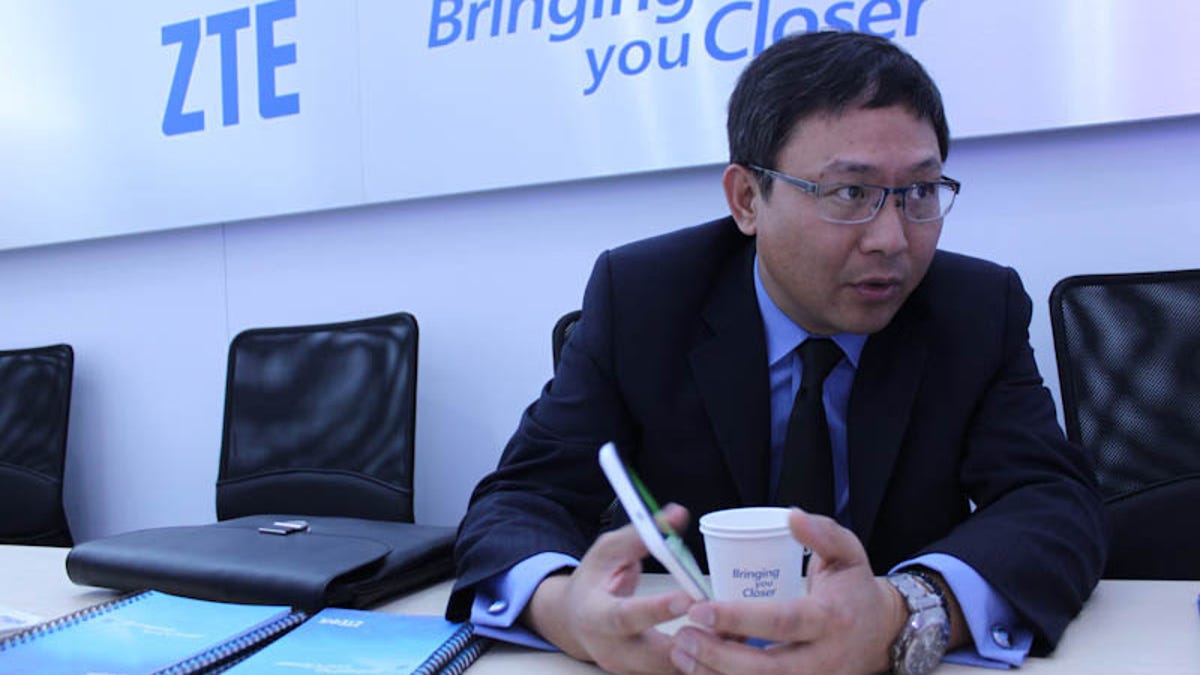ZTE readies itself for U.S. expansion in 2013
Lixin Cheng, the department head of ZTE's U.S. division, sits down with CNET during CES 2013 to detail the company's future goals.
LAS VEGAS--Lixin Cheng and the rest of his division are determined to make it in America.
Cheng is the CEO of ZTE's U.S. division, and in addition to strengthening the company's carrier relationships, Cheng also has big plans in the near future to increase ZTE's presence in the U.S.
"There are a lot of things already in the pipeline," he said, referring to the devices planned through U.S. carriers.
But other than just spending money on developing handsets (though Cheng does refer to it as ZTE's "bread and butter"), the company also plans on using the $30 million that it recently announced to expand its U.S. infrastructure, warehousing, and local research and development.
Of course, there are serious obstacles to face. Last fall, the U.S. House Intelligence Committee held a hearing expressing security concerns over alleged ties Huawei and ZTE had with the Chinese government.
Though both companies tried to reassure the lawmakers and the American public that there was nothing to worry about, a veil of suspicion from U.S. consumers remains.
For Cheng, the entire issue was troubling, but there were a few silver linings. First, it helped ZTE increase its transparency with the FCC. Secondly, as the old saying goes, any press is good press.
"From a branding point of view, it increased our brand awareness and a lot of people know ZTE more," he said. "I can't believe there is a positive side, but that's one, I think."
And as for concerns about competing with the tech giants already dominating the U.S. market, Cheng said there isn't any really.
He continued, saying he has full respect for Samsung and Apple, but because ZTE provides such a wide range of inexpensive and prepaid handsets, the company fulfills a niche role in the market that the other two do not satisfy.
"Honestly, I'm not focused on competitors," he said. "That's just our strategy. We're focused on our customers."
For now, what's important are the things that have a more immediate impact, like bringing the ZTE Grand S, the company's new flagship handset, to the U.S. after its initial Chinese launch.
Cheng is determined to have it available on our shores because it would mark a notable departure from ZTE's usual line of midrange handsets in the U.S. With this smartphone, along with carrier branding, the Grand S could be the boost the company needs to make a more positive name for itself.
Especially when considering the money that's at stake. Even though ZTE increased its U.S. market share 5 to 6 percent in the last two years, the financial gains from last year weren't so high. Cheng, however, remains steadfast.
"Last year was a very challenging year for us," he said. "But despite that, ZTE is committed to the U.S. market."
For more of CNET's CES 2013 coverage, click here.


